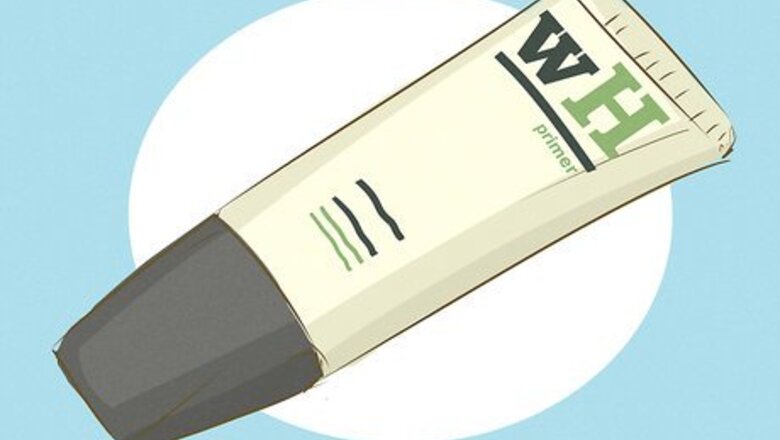
views
Choosing the Right Sunscreen
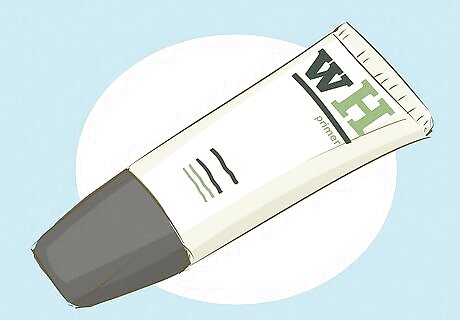
Use the SPF that's right for you. Think about how quickly you burn on a sunny day. Multiply that number in minutes by the sun protection factor (SPF) of the sunscreen you're considering. The result will tell you the maximum amount of time the sunscreen will keep you protected. For example, if your skin turns red after 10 minutes in the sun, a sunscreen with SPF 15 should allow you to spend 150 minutes (2.5 hours) in the sun. No matter how quickly or slowly you tend to burn, the American Academy of Dermatology recommends using a sunscreen that is at least SPF 30.
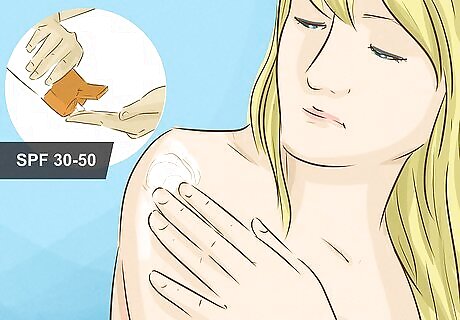
Be cautious even when wearing high SPF sunscreens. While higher SPF sunscreens do offer more protection, there is relatively little difference in the degree of protection offered by SPFs higher than 50. Sunscreen also cannot fully protect you from potentially harmful UVA radiation, no matter how high the SPF is. Keep in mind that wearing a high SPF sunscreen does not mean that you should avoid other protective measures, like staying in the shade, minimizing your time in the sun, and wearing protective clothing.

Look for complete UV protection. The sun emits ultraviolet (UV) light in long-wave (UVA) and shortwave (UVB) rays. Both can cause skin cancer, but not all sunscreens contain UVA protection. Check the front of the packaging for terms like “Broad Spectrum.” This indicates protection from both kinds of UV rays.

Choose mineral sunscreen for sensitive skin. Mineral sunscreens may not contain the irritants that many chemical sunscreens contain. Zinc oxide and titanium dioxide are the most common active ingredients in mineral sunscreens. Both zinc oxide and titanium dioxide can make some people break out. If you are prone to breakouts, look for sunscreens that are labeled “noncomedogenic” (meaning they will not clog your pores).

Buy sunscreen formulated for oily skin if you're prone to breakouts. Read the packaging carefully. Look for oil-free formulas. If you have acne-prone skin, purchase sunscreens labeled “Non-Comedogenic.” These formulas won't clog your pores.
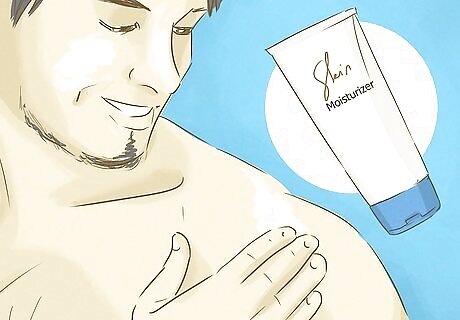
Purchase moisturizing sunscreens if you have dry skin. Look for terms like “cream,” “lotion,” or even “ointment” on the front of the packaging. Moisturizing sunscreens are often formulated as these skincare products. Check for moisturizing ingredients like oil and lanolin.
Taking Other Measures to Protect Your Skin

Stay out of the sun between 10am and 3pm. UV rays are the most intense at this time. The longer you're outside, the longer your skin is exposed to the radiation. Get your exercise and activities done earlier or later in the day, when the rays aren't as strong. In some latitudes, you should stay out of the sun between 11am and 4pm. Do your research before you go on vacation, especially if you'll be close to the equator. Err on the side of safety during the hours suggested.

Wear protective clothing over your skin. Use lightweight fabrics so you don't overheat. Cover as much skin as you can. Choose materials that won't itch, scratch, or overheat you. Wear reflective colors, such as yellow or white, to stay cool.

Wear a wide-brimmed hat. This will protect your scalp, face, and neck from too much exposure. Opt for a hat with a brim that is at least 3 inches (7.6 cm) wide. Make sure it's not too tight to avoid discomfort. If you're standing in one spot for a long time, tilt the brim as the angle of the sun shifts.

Wear sunglasses. The sensitive skin around your eyes is prone to fast aging. Worse, too much sun can raise your risk of ocular melanoma and cataracts. Choose sunglasses with strong UV protection and select the color of your lenses based on your needs. For example, you should choose: Gray for truest color correctness. Brown for truest color contrast. Yellow for enhanced depth perception.
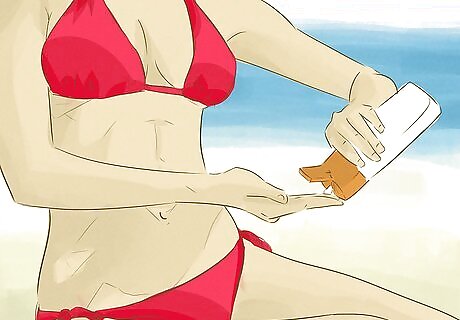
Ditch the obsession with a tan. Sunbathing or using a tanning bed increases your chances of developing skin cancer. Moreover, sunbathing can add 20 years to your age by dehydrating and wrinkling your skin. Use mineral bronzer if you must have a tanned look. Be careful with spray-on tans or other “fake tan” products. They contain a lot of chemicals that can be harmful for your skin and your whole health. Check the EWG Skin Deep website for the safest products. Dark skin is vulnerable to sun damage, too. Even though you may not be able to see the damage, it's still there.
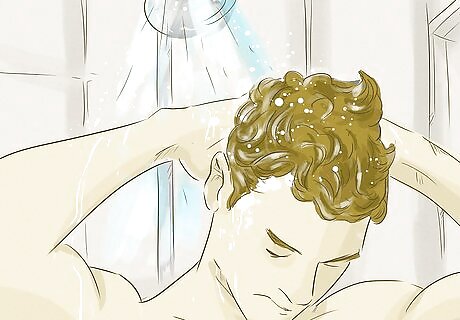
Shower after swimming. Chlorine can dry out your skin and result in an allergic reaction. Even if you've been swimming in a natural body of water, hitting the post-swim shower will rinse harmful bacteria and irritants off of your skin. Use soap and shampoo as you would during a regular shower.

Examine your skin for possible skin cancer. Do this at least once a month. Keep your eyes peeled for moles that have changed shape or size or that hurt, itch, or bleed. If you see any signs of skin cancer, contact your doctor as soon as possible.
Dealing with Summer Skin Conditions
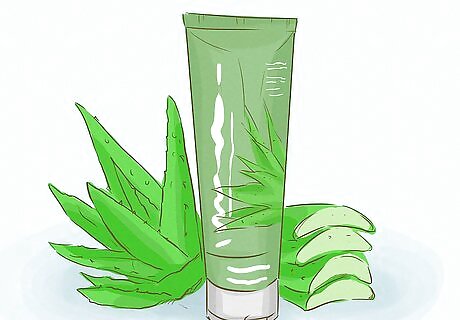
Treat sunburn promptly. Cool your skin in a cold pool, natural body of water, or cold shower. Keep it short if you're outside to avoid more sun exposure. Then, moisturize your skin while it's still damp. Use aloe vera or other petroleum-free lotion. To reduce discomfort, take anti-inflammatory drugs like over-the-counter NSAIDs. Carefully follow the directions on the label, or follow your health-care provider's instructions. Soothe redness and swelling over the next few days with a 1% over-the-counter cortisone cream. Follow the directions on the label or apply as directed by your doctor. Sunburn draws water to the surface of your skin to promote healing. However, this could put you at risk for dehydration. Drink extra water to heal the burn and stay properly hydrated. See your doctor if a large portion of your skin starts to blister, if you develop a fever and/or chills, or if you start to feel confused or woozy. These symptoms could signal severe sunburn.

Eat a healthy diet to minimize summer breakouts. Pass on pizza, baked goods, chocolate, fries, and other foods that may cause breakouts. Substitute them with fiber-rich foods like fruit, veggies, raw nuts, and raw seeds.
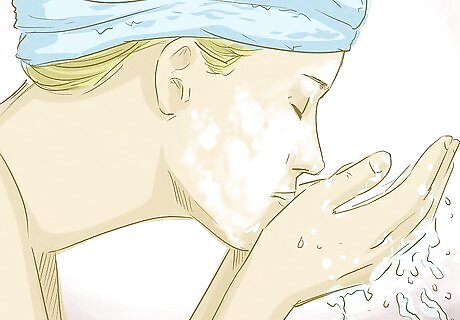
Adopt a healthy skin cleansing routine. Wash your face at least twice a day with an exfoliating cleanser. Follow up with a toner containing salicylic acid and an oil-free moisturizer.

Control oily skin. Heat and humidity can cause your oil glands to go haywire in the summer. Fight back with a skincare routine that involves exfoliation. You can do this with a facial scrub or mask treatment. For a shine-free face during the day, blot your face with blotting papers, especially on your nose, forehead, and cheeks. Cut back on the makeup to prevent clogged pores, which cause excess oil production. If you have oily skin, you may need to exfoliate a few times a week or even daily.
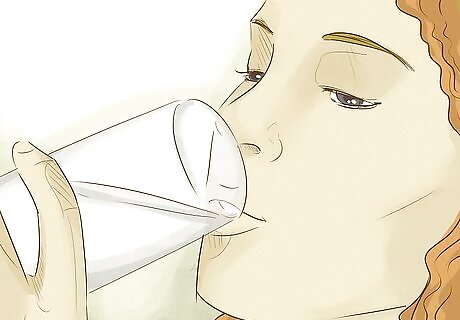
Drink plenty of water. Drinking enough water can help hydrate your skin if you become dehydrated, which can happen easily in the summer heat. Try to drink at least 64 fluid ounces (1.9 L) each day. Drink more if you'll be exercising or playing sports. However, don't overdo it. Forcing yourself to drink too much water can cause a dangerous and potentially fatal condition called hyponatremia, or water intoxication. Drink enough to quench your thirst, but don't chug so much water that you start to feel uncomfortable.


















Comments
0 comment